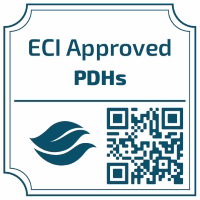Back
Claim Credit Verification Code: 2027
One (1) Hour Workshop
Erosion and Sediment Control
How Solar Can Be a Better Neighbor - Ways to Manage Risk, Save Money, and Keep All Stakeholders in Support of the Project
Wednesday, February 26, 2025
1:45 PM – 2:45 PM ET
Location: E21B
CE: 1 PDH
Level of Presentation: Intermediate

Matt Love
Inside Sales Manager
Faircloth Skimmer
HILLSBOROUGH, North Carolina, United States
Presenter(s)
As solar facility owners, designers, and contractors expand their projects from desert regions to areas with more challenging stormwater management conditions, many valuable lessons are being learned. This presentation is based off of insights from a construction stormwater professional with experience in several utility-scale solar facilities in the wet, hilly southeastern US. It will explore five key risk areas and outline a fundamental approach to stormwater management that can be applied successfully to all land-disturbing projects, regardless of size or the type of infrastructure being built.
Full Abstract: The US is one of the world’s leaders in producing solar energy. Currently, 20% of the energy used in the US comes from renewable sources, and in the next year or two, solar is expected to overtake wind as the number one source of renewable energy. More and more companies are investing in the solar industry, either for improved optics, decreased operating costs for entities that use a lot of electricity, or simply for the potential to sell the site and/or electricity for profit.
This growth has led to sites getting larger (more land = more solar panels = more money) and expanding into different areas of the country. Specifically, the growth of solar in the East and the Midwest has been significant. Often, developers and contractors with experience in developing solar sites are called in to work on these newer projects. While they may have experience working in the desert, they are not as experienced in less-forgiving areas for managing stormwater. Sites in the West tend to be flat and rectangular, but in the East, they are much more irregular and fragmented. The topography of the land and the higher amount of rainfall make controlling stormwater a significant challenge, associated with numerous financial and environmental risks.
Regulatory risk - If turbid water leaves a job site, the project is not in compliance, and fines will follow.
Environmental risk - Nearby waterways and wetlands can be significantly impacted and/or destroyed.
Community expectations - If people are unhappy with nearby development, they will find things to complain about, which could incur fines and/or increased costs.
Legal expectations - The Clean Water Act allows citizens to sue if they believe the state/regulators are not doing their job correctly. Additionally, sediment from a job site entering someone else’s property is considered trespassing, and the project will be liable for cleaning up the mess.
Operational and maintenance risks - Erosion and deposited sediment can cause problems with the operation of the solar site and access for maintenance, leading to increased costs.
Contractual risks - If contractors are not given the adequate tools they need for site control, they can file a claim with the owner to determine who covers the additional costs.
Following the Five Pillars of Construction Stormwater Management can help to reduce or mitigate these risks:
Manage Communication – Examples include pre-bid or pre-construction meetings, specifications, documents, and plan notes. Anything to convey the priorities and expectations of the owner to increase effectiveness in project planning, design, and implementation.
Manage Work – Telling contractors up front how work should be done, staging/sequencing the project to minimize disturbed areas and the duration of disturbances, and promoting continual pursuit of permanent stabilization to protect the owner’s interests and environmental responsibilities.
Manage Water – Addressing run-on from offsite, runoff that lands on-site, and being intentional about where water is conveyed to minimize the work of managing erosion and sediment.
Manage Erosion – Managing flow velocities and establishing vegetation to reduce erosion as much as possible, thus limiting the work of managing sediment.
Manage Sediment – Slowing water down and holding it long enough for sediment to settle out before stormwater is discharged offsite.
Following these five pillars in order from 1 to 5 might incur some additional upfront costs, but will pay off by reducing costs on the back end.
Full Abstract: The US is one of the world’s leaders in producing solar energy. Currently, 20% of the energy used in the US comes from renewable sources, and in the next year or two, solar is expected to overtake wind as the number one source of renewable energy. More and more companies are investing in the solar industry, either for improved optics, decreased operating costs for entities that use a lot of electricity, or simply for the potential to sell the site and/or electricity for profit.
This growth has led to sites getting larger (more land = more solar panels = more money) and expanding into different areas of the country. Specifically, the growth of solar in the East and the Midwest has been significant. Often, developers and contractors with experience in developing solar sites are called in to work on these newer projects. While they may have experience working in the desert, they are not as experienced in less-forgiving areas for managing stormwater. Sites in the West tend to be flat and rectangular, but in the East, they are much more irregular and fragmented. The topography of the land and the higher amount of rainfall make controlling stormwater a significant challenge, associated with numerous financial and environmental risks.
Regulatory risk - If turbid water leaves a job site, the project is not in compliance, and fines will follow.
Environmental risk - Nearby waterways and wetlands can be significantly impacted and/or destroyed.
Community expectations - If people are unhappy with nearby development, they will find things to complain about, which could incur fines and/or increased costs.
Legal expectations - The Clean Water Act allows citizens to sue if they believe the state/regulators are not doing their job correctly. Additionally, sediment from a job site entering someone else’s property is considered trespassing, and the project will be liable for cleaning up the mess.
Operational and maintenance risks - Erosion and deposited sediment can cause problems with the operation of the solar site and access for maintenance, leading to increased costs.
Contractual risks - If contractors are not given the adequate tools they need for site control, they can file a claim with the owner to determine who covers the additional costs.
Following the Five Pillars of Construction Stormwater Management can help to reduce or mitigate these risks:
Manage Communication – Examples include pre-bid or pre-construction meetings, specifications, documents, and plan notes. Anything to convey the priorities and expectations of the owner to increase effectiveness in project planning, design, and implementation.
Manage Work – Telling contractors up front how work should be done, staging/sequencing the project to minimize disturbed areas and the duration of disturbances, and promoting continual pursuit of permanent stabilization to protect the owner’s interests and environmental responsibilities.
Manage Water – Addressing run-on from offsite, runoff that lands on-site, and being intentional about where water is conveyed to minimize the work of managing erosion and sediment.
Manage Erosion – Managing flow velocities and establishing vegetation to reduce erosion as much as possible, thus limiting the work of managing sediment.
Manage Sediment – Slowing water down and holding it long enough for sediment to settle out before stormwater is discharged offsite.
Following these five pillars in order from 1 to 5 might incur some additional upfront costs, but will pay off by reducing costs on the back end.
Learning Objectives:
At the conclusion of this presentation, attendees will:
- Understand the risks associated with poor stormwater management on solar sites
- Follow steps 1 and 2 of the Five Pillars of Construction Stormwater Management to ensure clear communication of priorities and expectations of the owner of a solar site and strategies to protect the owner's interests and environmental responsibilities
- Follow steps 3, 4 and 5 of the Five Pillars of Construction Stormwater Management to manage water, erosion, and sediment to reduce costs associated with non-compliance and other issues that may arise

.jpg)


